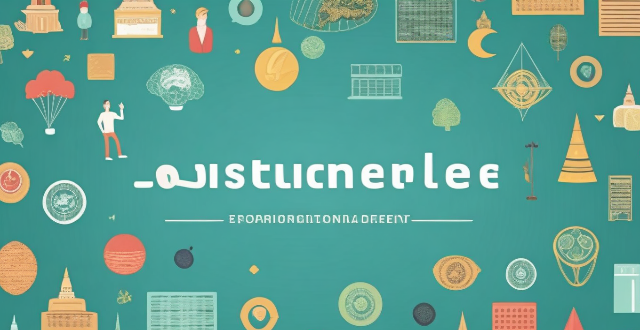Successful sustainable development projects aim to meet the needs of the present without compromising future generations. Examples include the Great Green Wall for the Sahara and the Sahel Initiative, the Danish Wind Energy Revolution, Solar Power in India, Copenhagen's Bike Culture, and Renewable Energy in Costa Rica. These projects focus on balancing economic, social, and environmental considerations and demonstrate positive impacts on both the environment and society.

Successful Examples of Sustainable Development Projects
Sustainable development projects aim to meet the needs of the present without compromising the ability of future generations to meet their own needs. These projects focus on balancing economic, social, and environmental considerations. Here are some successful examples:
1. The Great Green Wall for the Sahara and the Sahel Initiative
The Great Green Wall is an ambitious project that aims to combat desertification, mitigate the effects of climate change, and improve the livelihoods of people in the Sahara and the Sahel region. It involves planting a wall of trees across the width of Africa, stretching from Senegal to Djibouti. This initiative not only helps in reducing carbon emissions but also supports local communities by providing jobs and improving food security.
2. Danish Wind Energy Revolution
Denmark has been a pioneer in wind energy, with over 40% of its electricity coming from wind power. The country's commitment to sustainable energy has led to the creation of thousands of jobs in the wind industry and has significantly reduced its carbon footprint. The Danish government's long-term strategy includes phasing out coal-fired power plants and increasing the share of renewable energy sources in the energy mix.
3. Solar Power in India
India has made significant strides in solar power generation, becoming one of the world's largest producers of solar energy. The government's National Solar Mission aims to increase solar capacity to 100 gigawatts by 2022. This initiative not only helps in reducing greenhouse gas emissions but also provides affordable and reliable electricity to millions of people, particularly in rural areas.
4. Copenhagen's Bike Culture
Copenhagen, Denmark, is known for its extensive network of bicycle paths and its bike-friendly culture. Approximately 62% of Copenhageners commute to work or school by bicycle every day, making it one of the most cycle-friendly cities in the world. This sustainable mode of transportation reduces air pollution, traffic congestion, and noise levels while promoting a healthy lifestyle among citizens.
5. Renewable Energy in Costa Rica
Costa Rica has committed to becoming carbon neutral by 2021 and plans to generate 100% of its electricity from renewable sources by 2025. The country has already achieved significant milestones in this regard, with over 98% of its electricity coming from renewable sources such as hydropower, geothermal energy, wind power, and solar energy. This transition has helped reduce greenhouse gas emissions and create new job opportunities in the renewable energy sector.
In conclusion, these successful examples demonstrate that sustainable development projects can have positive impacts on both the environment and society. By focusing on renewable energy sources, green infrastructure, and eco-friendly transportation options, we can create a more sustainable future for all.